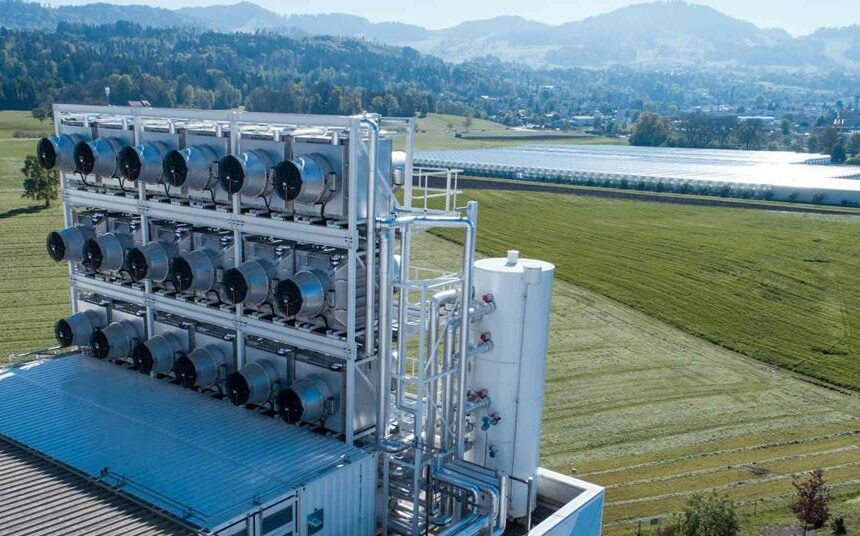As part of its ambitious Carbon Negative Shot Initiative, the Department of Energy (DOE) is funding a host of innovative and ground-breaking carbon dioxide removal (CDR) solutions nationwide. In an announcement on February 12, DOE offered up to $100 million in funding to spearhead CDR-related pilot and demonstration scale projects with the potential to help decarbonize the economy.
>>>READ: Nuclear Power May Soon Power Direct Air Capture
Operating within a maximum cost limit of $100 per net metric ton of CO2-equivalent removed, the DOE delineated a host of performance metrics that will inform its technology selection process, including full lifecycle emissions accountability, robust and durable CO2 capture and storage, and technologies that facilitate gigaton-scale removal within the decade. Given the incredible potential that CDR holds, continued funding for these public-private partnerships could be helpful to de-risk and commercialize CDR technologies.
The Carbon Negative Shot, which is Housed in DOE’s Office of Fossil Energy and Carbon Management (FECM), launched in 2021 as a coordinated federal effort to lower costs, drive innovation, and spur private sector investment in the nascent field of carbon removal. In tandem with other clean energy and climate solutions such as the Industrial Heat Shot, Enhanced Geothermal Shot, and Affordable Home Energy Shot, the Carbon Negative Shot is one of eight so-called “Energy Earthshots” supported by the U.S. government.
The most recent Funding Opportunity Announcement will support pilot projects and testing facilities across three key areas of CDR: small biomass carbon removal and storage pilots (five projects for up to $35 million), small carbon mineralization prototypes (10 projects for up to $40 million), and multi-pathway carbon dioxide removal testbed facilities (five projects for up to $25 million).
In addition to these forms of CDR, the Carbon Negative Shot also supports advancements in direct air capture (DAC), which pulls CO2 directly from the atmosphere through a combination of industrial-sized fans and chemical processes. Several projects have already benefited from the program including Colorado-based Global Thermostat, a leader in U.S.-based DAC systems.
Currently, the main downside to DAC is its high cost. The World Resources Institute estimates that DAC costs vary between $250 to $600 per ton of CO2 removed, making price the biggest impediment to full-scale deployment. This is because only a small percentage of the atmosphere consists of carbon dioxide, so extracting CO2 from the air is a pricey endeavor. Storing and using the captured carbon is also a significantly energy-intensive process. However, that is precisely where the DOE’s Carbon Negative Shot initiative comes into play by funding research, development, and demonstration to help scale up cutting-edge DAC technologies.
>>>READ: Three Federal Innovation Programs That Lawmakers Should Prioritize
Currently, the FECM is sponsoring the DAC Pre-Commercial EPIC Prize, which was created in the Republican-led 2020 Energy Act. The competition is still in its judging phase, but semifinalists include global engineering firm Black & Veatch, which is collaborating with Global Thermostat on one of the world’s largest DAC plants in Colorado, and Berkeley, CA-based Activate Global, which provides custom-tailored entrepreneurial fellowships to up-and-coming DAC startups. Each incubator team will receive a $100,000 cash infusion and the opportunity to progress to the “Move It” phase of the competition, where they can showcase the implementation of their solutions.
Another division within the Energy Department that supports clean energy demonstration projects is the Office of Clean Energy Demonstrations (OCED). While not a part of the Carbon Negative Shot, OCED shares many of the same goals and is financing the establishment of four domestic regional facilities for direct air capture under the Regional DAC Hubs Program. Each of the hubs has the potential to capture at least one million metric tons of CO2 annually from the atmosphere. Last year DOE awarded $1 billion to two DAC hubs in Louisiana and Texas. The program received $3.5 billion in funding in 2022 from the Bipartisan Infrastructure Law.
As the world warms, more federal investment in emerging technologies is needed, not less. Spurring private sector innovation requires supporting carbon removal technologies in their early stages, and that means supporting the vital work that programs like the Carbon Negative Shot aim to accomplish.
Nathalie Voit is a freelance content creator and a graduate of the University of Florida. She is an alumni of The Heritage Foundation’s Young Leaders Program.
The views and opinions expressed are those of the author’s and do not necessarily reflect the official policy or position of C3.
